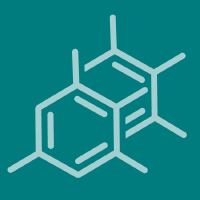Topic Menu
► Topic MenuTopic Editors

Salicylic Acid as Plant Biostimulant
Topic Information
Dear Colleagues,
Anthropogenic activities intensify the negative impact of climate change, compromising the ability to produce sufficient food. The increasing demand for sustainable biosolutions in agriculture has brought biostimulants to the forefront as valuable tools for regenerative farming. Given their varied biological activities, biostimulants play a key role in enhancing crop growth, improving nutrient efficiency, sustaining resilience to environmental stressors, and restoring soil health. Salicylic acid (SA) is an essential plant hormone interconnected with other plant hormones. It can mitigate the accumulation of excessive reactive oxygen species (ROS), effectively acting as an antioxidant and plant growth regulator, while modulating the adverse effects of biotic and abiotic stresses. Salicylic acid affects a variety of physiological, biochemical, and developmental processes, e.g., stomatal closure, membrane permeability, seed germination, photosynthesis, transpiration rate, plant immunity, and growth yield. By modulating the expression of pathogenesis-related (PR) genes, influencing redox homeostasis, and regulating programmed cell death (PCD), it contributes to the hypersensitive response (HR) against pathogens while also affecting cellular differentiation and metabolic adaptation. SA belongs to a diverse group of plant phenolics which have been associated with the chemical defense of plants against microbes, insects, and herbivores. During abiotic stress conditions, minimal concentrations of SA can induce the synthesis of osmolytes, such as proline, ameliorating osmotic potential. The impact of salicylic acid on plants may differ depending on the plant species, concentration used, exposure time, and the way it is applied. Salicylic acid has been suggested to have potential for mitigating abiotic stress in major agricultural crops, improving their stress resistance, and acting as an antioxidant, osmo-regulator, biostimulant, and signaling molecule in systemic acquired resistance (SAR) and local defense mechanisms.
This Topic will help elucidate the molecular mechanisms of SA activity on plant metabolism and will highlight the complexity of SA interactions with other hormones in activating a regulatory response network to environmental stresses. This knowledge will enhance our understanding of plant responses to stress factors, which can help in the development of realistic interventions to increase agricultural productivity. Scientists from all around the world are invited to submit original research and review articles on the impact of SA on any aspects related to crop agriculture and plant physiology and development, including growth, water relations, nutrition, photosynthesis, and other related plant physiological processes.
Prof. Dr. Michael Moustakas
Dr. Julietta Moustaka
Topic Editors
Keywords
- plant defense
- sustainable agriculture
- abiotic stress
- drought stress
- salt stress
- heavy metals
- biotic stress
- stress resistance
- plant immunity
- herbivores
Participating Journals
| Journal Name | Impact Factor | CiteScore | Launched Year | First Decision (median) | APC | |
|---|---|---|---|---|---|---|

Agriculture
|
3.6 | 6.3 | 2011 | 18 Days | CHF 2600 | Submit |

Molecules
|
4.6 | 8.6 | 1996 | 16.1 Days | CHF 2700 | Submit |

Plants
|
4.1 | 7.6 | 2012 | 17.7 Days | CHF 2700 | Submit |

International Journal of Molecular Sciences
|
4.9 | 9.0 | 2000 | 20.5 Days | CHF 2900 | Submit |

Crops
|
1.9 | 2.4 | 2021 | 23.5 Days | CHF 1200 | Submit |

Preprints.org is a multidisciplinary platform offering a preprint service designed to facilitate the early sharing of your research. It supports and empowers your research journey from the very beginning.
MDPI Topics is collaborating with Preprints.org and has established a direct connection between MDPI journals and the platform. Authors are encouraged to take advantage of this opportunity by posting their preprints at Preprints.org prior to publication:
- Share your research immediately: disseminate your ideas prior to publication and establish priority for your work.
- Safeguard your intellectual contribution: Protect your ideas with a time-stamped preprint that serves as proof of your research timeline.
- Boost visibility and impact: Increase the reach and influence of your research by making it accessible to a global audience.
- Gain early feedback: Receive valuable input and insights from peers before submitting to a journal.
- Ensure broad indexing: Web of Science (Preprint Citation Index), Google Scholar, Crossref, SHARE, PrePubMed, Scilit and Europe PMC.


